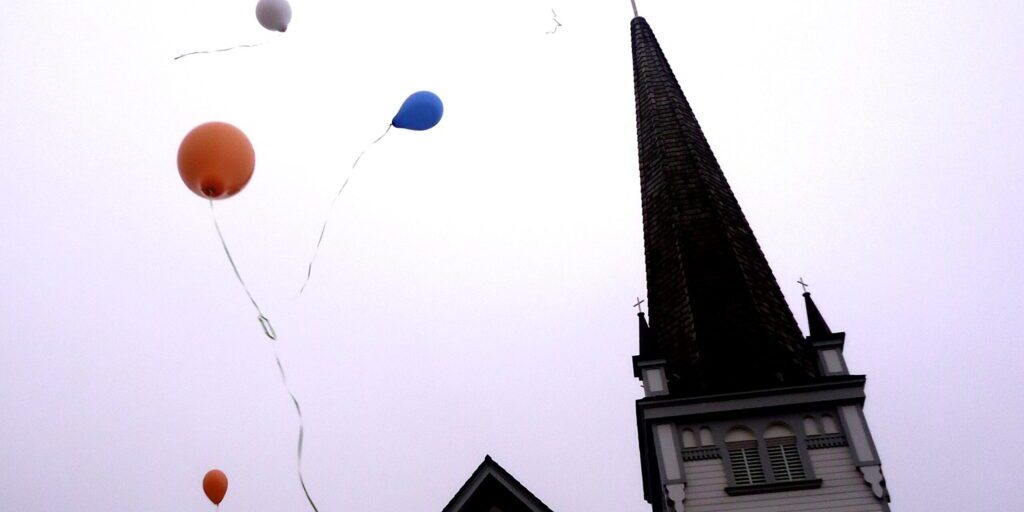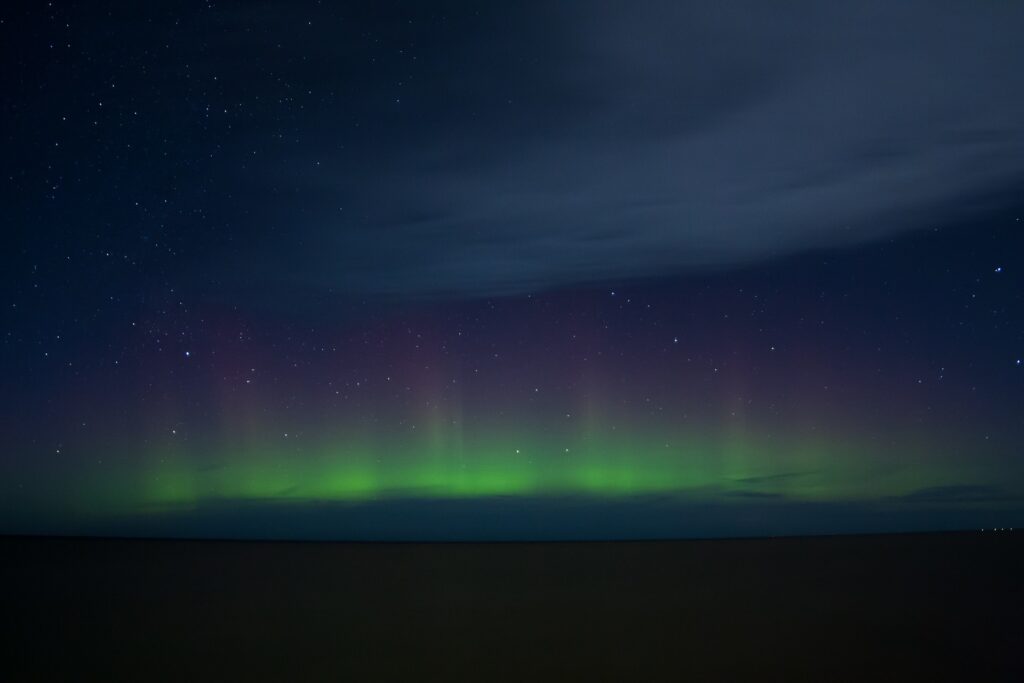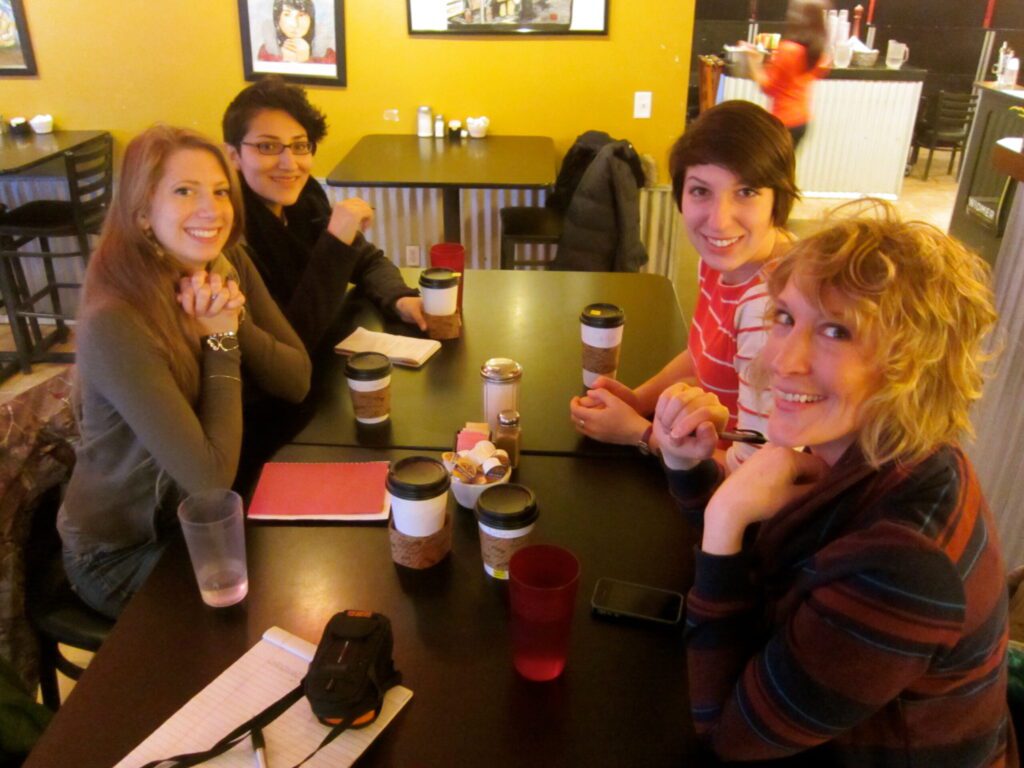Nome hasn’t seen sunlight in about week. Maybe more. Probably more. When it gets like this I honestly lose track.
Yesterday, I went to a friend’s house to eat cheese— because sometimes that’s just what friends do, they get together to eat cheese—but as soon as I stepped out of her house, BAM. Not only was it still grey and overcast, but a thick layer of fog had descended, and I found my normally familiar walk home strange and disorienting.
You’d think that the cold, dark winters are what get to you in western Alaska. That hasn’t been the case for me. I’ve repeatedly told the other volunteers that what got to me last year was not the winter but the first two weeks of summer and its awkward May transitional period. It’s just so… grey. Neutral yet gloomy, devoid of the beauty, texture, and color you normally see in the landscape. Many locals refer to this endless depression-inducing grayness as “the Nome crud.” And once it gets to you it’s hard to snap out of it. Thankfully, this year, I was better prepared for it. I moved into the month of May with a series of ideas and art projects to keep me busy.

I also made an extra effort to leave the house and attend more community events, which, I hate to admit, I haven’t been doing lately. There’s a strong spirit of voluntarism in this town, whether it’s individuals or organizations, and it’s hard to stay down when there are so many people working as hard as they are to counterbalance that.
One of such events was the annual soup-er bowl, a huge effort on Todd Hindman’s part. He prepared countless delicious soups and crafted beautiful ceramic bowls with some help of other Nome artists. Anyone who purchased a bowl could enjoy a few helpings of soup in the company of friends with all proceeds going to help rebuild Nome’s East End Park.  Nome Beltz High School’s dessert fundraiser attracted a huge group of Nomites into a small auditorium, where we enjoyed musical selections from the students while Richard Beneville broke the evening into dessert auctions—also donated by volunteers—in an effort to send these students to upcoming music competitions. Think about that. Living outside the road system means kids have to FLY out for these kinds of events, and plane tickets don’t come cheap. So, of course it’s up to us to make it happen. Desserts and art pieces sold between 100 to 500 dollars a piece.
Nome Beltz High School’s dessert fundraiser attracted a huge group of Nomites into a small auditorium, where we enjoyed musical selections from the students while Richard Beneville broke the evening into dessert auctions—also donated by volunteers—in an effort to send these students to upcoming music competitions. Think about that. Living outside the road system means kids have to FLY out for these kinds of events, and plane tickets don’t come cheap. So, of course it’s up to us to make it happen. Desserts and art pieces sold between 100 to 500 dollars a piece.
To top it all off, this weekend, The Bering Straits Native Corporation branch of Kawerak Wellness organized Nome’s Walk for Life, a celebration that brings awareness and support for suicide prevention, domestic violence, and community wellness.

At the front of the procession, a pick up truck blasted upbeat music while a bubble machine kept the children entertained. We made our trek past Old St. Joe’s and down Front Street, holding colorful signs, paper flowers, and balloons. Despite the constant threat of rain, we made it through the whole evening.
Nome is not an easy place to live in. The weather is volatile and harsh. Summers are short, winters are long. Everything you own, from cars and appliances to the clothes on your back, wears out faster than it would in other places. Travel costs an arm and a leg. Everything, in general, is prohibitively more expensive the further you get from a major city. You don’t even want to get me started on the price of a watermelon or a Nutella jar, let alone the quality of our produce. And the history of the region is, itself, dual and complicated. We’re often portrayed as a gold rush town on TV shows and other media, but Nome is also, and more importantly, home to the Native community of King Island.
Everything is harder than it should be, but I think that’s one of the things I respect most about Nome: this town has a grit about it that says, I know this is hard, but I’m going to push forward anyway. I’m not even going to complain about it, I’m going to thrive regardless.
This is an ideology I strongly identify with.
The skies may be grey, but it does not prevent us from releasing a rainbow of balloons in defiance. In a few weeks, the tundra will come back to life in luscious greens and purples and pinks, because not even Alaskan winters can keep the flowers and berries from growing every year and doing what they do best: survive.








